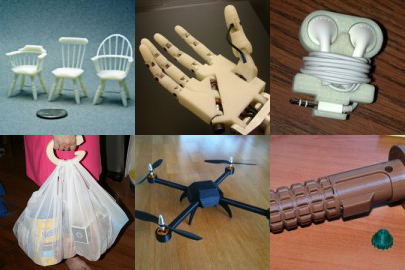
Yes, open designs, understood as a way to design and foment the creation of physical objects in a distributed manner, have been growing rapidly in recent years, following the example and long trajectory of free software and the licenses which sustain it.
If we focus broadly, we believe that anything which is designed or planned openly (and that's where all the projects which look for funding on Goteo come in) has an enormous potential to generate new works or creations derived from their example, and ultimately a much larger impact on society. Open design also accommodates communities around it and a productive and economical ecosystem in which most participants can benefit, blurring the traditional distinction between consumer and producer.
We are of the opinion that open design (especially of hardware and many types of material goods) could contribute to breaking out of the socio-economic predicament in which we are immersed right as various models are shaky. Thinkers such as Michel Bauwens and Chris Anderson illustrate this with examples of the force of Open Source Ecology (open and easy fabrication of a group of industrial machines which permit the creation of sustainable human settlements) and Arduino (open hardware platform designed to facilitate the use of electronics in multidisciplinary projects), among many others.
So here we are trying to accommodate new examples driven by capable, brave people seeking initial support make their open designs (appropriable under certain rules) something tangible for those who support them in their effort: shoes the end user must assemble before wearing, a cardboard chair to be put together and tuned by kids, on-demand printing of 3D objects generated by those who know how to them or through a free design gallery and an ultrasound device to assist visually impaired people.
Which of them do you want to take part in?
Previous experience such as the successful support of InfinitLoop (159 cofunders), an open reusable gift wrapping and sewing pattern under Creative Commons license, as well as the interest that campaigns like the assemblable shoes Znsamble have sparked online (Wired, IdoProyect, ElFashionista), make us believe that all this is possible. The question now is: how far we are prepared and determined to contribute to make these proposals viable?
By the way, we have been invited to do a presentation at the closing of the Open Design Conference in Barcelona on July 3, where we will try to translate this post into images and reinforce the idea that open design is more a necessity than a fashion.





 Alex
Alex 
 Manuela Frudà
Manuela Frudà 